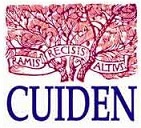Basics of Health Care Team Relationships and Interprofessional Practice
Resumen
Relationship-based care is a philosophy, an operational plan for excellence and a way of being.
It is essential that the transformation of a health care organization be a team effort based on a common vision, values and anticipated results.
Keywords: Relationships, Health Care Team, Interprofessional Practice
Descargas
Citas
2. Chesley B. “Sully” Sullenberger: Making safety a core business function [Interview]. (2013, October). Healthcare Financial Management, 67, 50–54.
3. Classen, D. C., Resar, R., Griffin, F., Federico, F., Frankel, T., Kimmel, N., . . .James, C. (2011). Global “trigger tool” shows that adverse events in hospitals may be ten times greater than previously measured. Health Affairs, 30(4),581-589. doi: 10.1377/hlthaff.2011.0190
4. Duhigg, C. (2016, February 25). What Google learned from its quest to build the perfect team. The New York Times Magazine. Retrieved from http: //www.nytimes.com/2016/02/28/magazine/what-google-learned-from-its-quest-tobuild-the-perfect-team.html
5. Edmundson, A. (2012). Teaming: How organizations learn, innovate, and compete in the knowledge economy. San Francisco: Jossey-Bass.
6. Goleman, D. (1998). Working with emotional intelligence. New York: Bantam.
7. Goleman, D., & Boyatzis, R. (2008, September). Social intelligence and the biology of leadership. Harvard Business Review. Retrieved from https: //hbr.org/2008/09/social-intelligence-and-the biology-of-leadership
8. Helmreich, R., Merrit, A., & Wilhelm, J. (1999). The evolution of crew resource management training in commercial aviation. International Journal of Aviation Psychology, 9(1), 19-32. doi: 10.1207/s15327108ijap0901_2
9. Kita, J. (2010, October). Doctors confess their fatal mistakes. Reader’s Digest.Retrieved from http://www.rd.com/health/conditions/doctors-confess-their-fatal-mistakes/
10. Kohn, L. T., Corrigan, J. M., & Donaldson, M. S. (Eds.) (2000). To err is human: Building a safer health system (IOM Report). Retrieved from https: //www.nap.edu/catalog/9728/to-err-is-human-building-a-safer-health-system
11. Koloroutis, M. (2017). See me as a person therapeutic practices: Core competencies applied to teams In Koloroutis, M., & Abelson, D. (Eds.), Advancing relationship-based cultures (pp.279-281). Minneapolis, MN: Creative Health Care Management.
12. Koloroutis, M., & Trout, M. (2012). See me as a person: Creating therapeutic relationships with patients and their families. Minneapolis, MN: Creative Health Care Management.
13. Landrigan, C. P., Parry, G. J., Bones, C. B., Hackbarth, A. D., Goldman, D. A., & Sharek, P. J. (2010). Temporal trends in rates of patient harm resulting from medical care. New England Journal of Medicine, 363, 2124-2134. doi: 10.1056/NEJMsa1004404
14. Lieberman, M. D. (2013). Social: Why our brains are wired to connect. New York: Crown.
15. Makary, M. A., & Daniel, M. (2016). Medical error—the third leading cause of death in the US. British Medical Journal, 353(i2139). doi: 10.1136/bmj.i2139
16. Moorthy, K., Munz, Y., Adams, S., Pandey, V., & Darzi, A. (2005). A human factors analysis of technical and team skills among surgical trainees during procedural simulations in a simulated operating theatre. Annals of Surgery, 242(5), 631-639. doi: 10.1097/01.sla.0000186298.79308.a8
17. Shanafelt, T. D. (2009). Enhancing meaning in work: A prescription for preventing physician burnout and promoting patient-centered care. Journal of the American Medical Association, 302(12),1338-1340. doi: 10.1001/jama.2009.1385
18. Siegel, D. (2007). The mindful brain: Reflection and attunement in the cultivation of well-being. New York: W.W. Norton.
19. Woolley, A. W., Chabris, C. F., Pentland, A., Hashmi, N., & Malone, T. W. (2010). Evidence for a collective intelligence factor in the performance of human groups. Science, 330(6004), 686-688. doi: 0.1126/science.1193147
20. Wu, A. W. (2000). Medical error: the second victim. British Medical Journal, 320, 726. doi: 10.1136/bmj.320.7237.726
21. Yule, S., Flin, R., Paterson-Brown, S., Maran, N., & Rowley, D. (2006). Development of a rating system for surgeons’ non-technical skills. Medical Education, 40(11), 1098-104. doi: 10.1111/j.1365-929.2006.02610.x
Los autores conservan los derechos de autor.
Esta obra está bajo una licencia internacional Creative Commons Attribution 4.0.
Los artículos publicados por la revista científica "Acc Cietna: para el cuidado de la salud" de la Escuela de Enfermería de la Universidad Católica Santo Toribio de Mogrovejo, Chiclayo, Perú están sujetos a una licencia internacional Creative Commons Attribution CC BY 4.0.




















 BIBLIOTECA USAT
BIBLIOTECA USAT